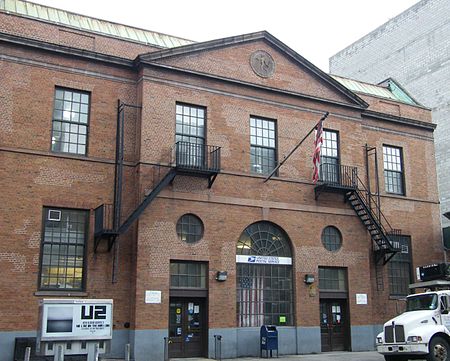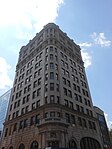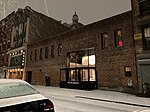United States Post Office (Knickerbocker Station)
1937 establishments in New York (state)Colonial Revival architecture in New York CityGovernment buildings completed in 1937Manhattan Registered Historic Place stubsManhattan building and structure stubs ... and 1 more
Post office buildings on the National Register of Historic Places in Manhattan

The United States Post Office Knickerbocker Station, originally known as "Station B", is a historic post office building located on East Broadway in Manhattan, New York City. It was built in 1935–37, and designed by consulting architect William Dewey Foster for the Office of the Supervising Architect of the United States Department of the Treasury. The building is a two to three story, brick building with a mansard roof and granite trim in the Colonial Revival style. The main entrance features a three bay wide pavilion topped by a pediment.The building was listed on the National Register of Historic Places in 1989.
Excerpt from the Wikipedia article United States Post Office (Knickerbocker Station) (License: CC BY-SA 3.0, Authors, Images).United States Post Office (Knickerbocker Station)
East Broadway, New York Manhattan
Geographical coordinates (GPS) Address Nearby Places Show on map
Geographical coordinates (GPS)
| Latitude | Longitude |
|---|---|
| N 40.714027777778 ° | E -73.991888888889 ° |
Address
United States Post Office
East Broadway 128
10002 New York, Manhattan
New York, United States
Open on Google Maps





